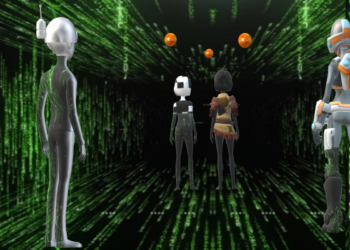Understanding Web3 in Brief
What is Web3?
Web3 is the decentralization of the internet to allow users and builders to contribute, own, or control a part of it. It is the internet of both users and builders. Everyone will use it, everyone will contribute to it, and everyone will own it. To realize this, web3 integrates blockchain, cryptocurrencies, Nfts, and other innovations that support decentralization.
Takeaway points
- Web3 will allow users to control their data and contribute
- The core component of web3 will be largely influenced by Decentralization, community governance, and token economy.
- Web3 and Web2 will co-exist until a seamless transition will be achieved over time
The most prominent aspect of web3 is “Decentralization“. Decentralizing the web simply means that it will not be in the hands of a single individual or central entity.
You should note, however, that the web is in constant development. Builders are still building. We are still in the early stages of the Web3 era. But here is the problem of the old web that has led to the clamor for the new.
The Problem with the Old Web and Why Web3 is Useful
Web3 is born from the agitation of users over the commercialization, censorship, control, and abuse of their data by corporate Internet players.
The problem is that the big corporations control, profit from, and compete among themselves over who should own the biggest share of users’ data.
Content censorship is also a very big issue in Web2. People who have contrary ideas or opinions that don’t align with power are censored. This ushered in the era of misinformation, fake news, and controlled narratives.
These aggressive controls and profit that sideline the user are faulty and are the foundational problem of web2.
When Web3 Began
Among many analysts, divergent disparities exists in the chronology of the internet and web3. But it’s safe to place them between decades. Web1 can be placed from the beginning of the 1990s and ends in the early 2000s. Web2 began in the early 2000s and ends in 2020. The talk around Web3 began getting stronger in 2020.
Although, the first practical idea of decentralization can be pinned to Satoshi Nakamoto’s Bitcoin Network from 2009. But it only took almost a decade to gain mainstream attention.
The bitcoin blockchain became proof that, with the right community, anything can be decentralized.
But the ideas of Web3 remain the same: GIVING POWER AND CONTROL ALSO TO THE USERS. The end user must have a piece of the action.
Web3 will be a combination of the governance system of web1 (which was largely community-driven) with the sophisticated performance of Web2.
Many Analysts believe a greater part of web3 will be deployed using Distributed Ledger Technology (DLT), due to its censor-resistant nature.
The Core features of web3 are :
- Decentralization
- Community governance
- DOAs
- Token economy ( fungible and non-fungible)
Tokens in web3 will play a role like company shares. Owning a token will be like owning shares of a company, which allows members to work towards a common interest to the benefit of the entire network.
The same theory applies to owning NFTS, which is like owning products and membership in a community. You get the idea.
Community governance, contribution, and participation will be key components of the new web to ensure divergent views on issues will be heard.
Will web3 Replace Web2?
Web3 will not eradicate web2. They will co-exist side by side for a long time until it is properly evolved.



















